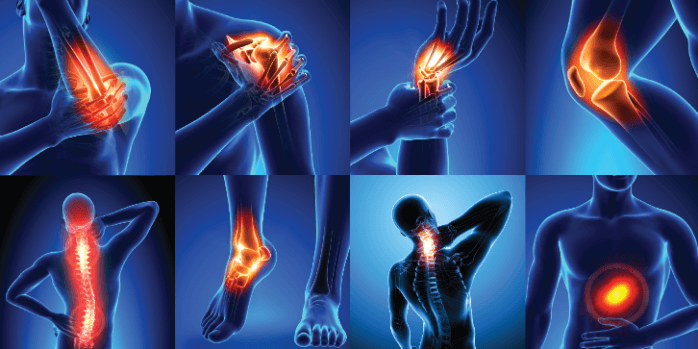Arthritis technically refers to joint inflammation. Additionally, arthritis pain can be dull and aching, throbbing, or sharp, making you gasp for air when you put weight on an affected knee or adjust your shoulder just so.
There are numerous methods for treating arthritis pain, just as there are numerous types of pain. Pain relief comes in a variety of forms, from prescription drugs to herbal remedies. Also, there are many supplements that claim to reduce joint pain and inflammation. Check out these supplements for joint pain.
Every technique is not effective for every person, and a technique that works for you one time may not always work the next. For pain, you'll probably need a fusion of therapies, and you might need to gradually stop using some and start using others. Here are some best treatment options for joint pain discussed below:
1. Disease-modifying medications and supplements
Trying to control the inflammatory problem is a vital step in pain relief. Fortunately, a wide range of medications can help with disease management. Some medications are designed to relieve pain.
2. Joint injections
Arthritis can be painful, but joint injections can help. These injections work quickly to reduce inflammation and pain. The pain is typically treated with a series of injections.
3. Topical Medications
Painkillers known as topical medications are applied onto the skin over the affected joint. They are available as sprays, creams, ointments, and patches, and they work by implementing one or more of the ingredients listed below: Capsaicin, Salicylates, Counterirritants and Diclofenac.
4. A healthy diet
An inflammatory arthritis diet that is high in whole foods like fruits, vegetables, fish, nuts, and beans and low in processed foods and saturated fats can help manage the condition, even though it may not always reduce joint pain. The pain might then become less severe as a result.
5. Weight loss
Losing weight can help with arthritis pain if you are overweight, especially if you have joint pain in the knee.
6. Fish oil
Polyunsaturated omega-3 fatty acids found in fish have potent anti-inflammatory properties. According to research, taking omega-3 supplements helped RA patients experience less pain, stiffness, and swelling in their joints.
7. SAM-e
The body naturally produces S-adenosyl-methionine (SAM-e), which has anti-inflammatory, pain-relieving and cartilage-protecting properties. In some analyses, it was just as effective as NSAIDs at reducing OA pain.
8. Curcumin
Curcumin, an ingredient in turmeric, has been shown to have anti-inflammatory and analgesic effects. According to some studies, A 1,500 mg daily intake of curcumin extract was just as effective as a 1,200 mg daily dose of ibuprofen.
9. Glucosamine and chondroitin sulfates
The most widely advertised and used supplements for osteoarthritis are glucosamine and chondroitin sulphates, two components of natural cartilage. There is proof that the two supplements can reduce pain for some people, but some studies have produced contradictory or inconclusive results.
10. CBD
The cannabis plant contains an active substance called cannabidiol (CBD). According to some studies, CBD has anti-inflammatory and pain-relieving features. Additionally, while CBD does not make you intoxicated, it may make you drowsy.
11. Physical Activity
While joint pain may initially make activity difficult, regular exercise will actually lessen your pain and stimulate the production of endorphins, which have pain-relieving properties.
12. Good Posture
Not all posture involves simply standing up straight. Poor posture can throw too much pressure on the joints in the spine, causing pain in the neck, back, and extremities. Regularly adopting good posture can reduce these strains and the pain they cause.
13. Hot and Cold Therapy
For temporary pain relief, apply heat to sore joints. Use a heating pad, hot water bottle, warm compresses, a hot tub session to relieve your pain. Try using commercial ice packs for joints that are painful and severely inflamed. Smaller joints, such as the elbows, feet, and hands, can be soaked into paraffin wax for soothing joint pain.
14. Relaxation techniques
There are numerous ways to ease pain through relaxation techniques, including lowering stress levels, easing muscle tension, releasing endorphins, and encouraging sound sleep. You can experiment with relaxation techniques on your own or with the help of a psychotherapist who can give you instructions and get you going. The three techniques of deep breathing, progressive muscle relaxation, and guided imagery are frequently used to lessen pain.
Wrap up
One of the major reasons for pain and disability in the world is arthritis. Prescription medications, physical therapy, dietary modifications, and over-the-counter remedies are just a few of the ways that joint pain can be treated. The main cause of your joint pain will ultimately determine your course of treatment. Make an appointment with your physician for an assessment and treatment plan if you've been facing joint pain.
* This is a contributed article and this content does not necessarily represent the views of sciencetimes.com











!['Cosmic Glitch' in Einstein's Theory of General Relativity Could Be Explained in This New Scientific Tweak [Study]](https://1721181113.rsc.cdn77.org/data/thumbs/full/53435/258/146/50/40/cosmic-glitch-in-einsteins-theory-of-general-relativity-could-be-explained-in-this-new-scientific-tweak-study.jpeg)



